What Paper Should I Use For My Artwork?
July 6, 2021Walk into any of our stores in search of paper and you could get lost in a sea of types, brands, textures, weights … the list goes on. Why are there so many different types? How can you choose the right one for your project? When selecting a paper for your work, many factors come into play, so let’s try to demystify the process.
First, there are some terms you need to consider when choosing the correct paper for each project.
You want your artwork to last as long as possible without deteriorating, so it’s really important to pick a paper that’s acid-free. Paper that isn’t can deteriorate, or turn yellow, which will affect the image over time. Acid-free paper is buffered with calcium carbonate which neutralizes acid that is absorbed from the air, or through the natural aging process. All Strathmore fine art papers (with the exception of Newsprint) are acid-free. Newsprint is a very low cost paper intended only for practising.
Depending on the project and medium you will be using, there are several other things to bear in mind.
Surface texture is important, especially if you plan to work in many layers. Once the surface tooth of the paper is filled, it’s hard to layer on any other colors. Choosing a paper with the correct tooth or texture is essential.
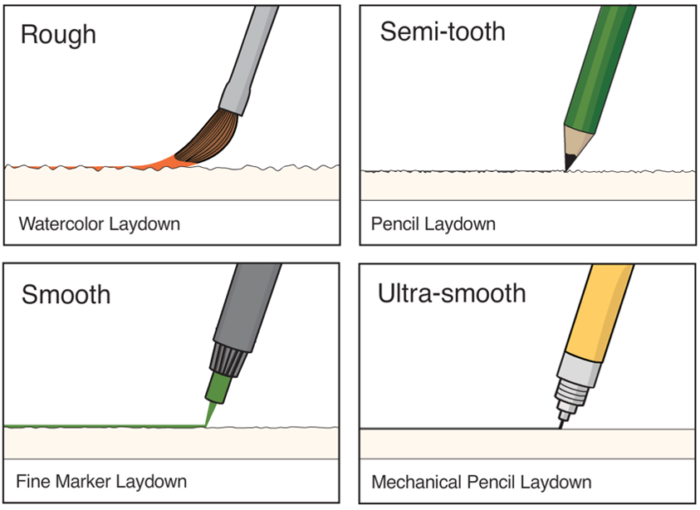
You’ll also want to consider weight: a heavier-weight paper can handle more layers, liquid, and techniques than a lighter weight paper. The weight of the paper is not determined by the individual sheet but by a ream of 500 sheets, weighed together at the factory.
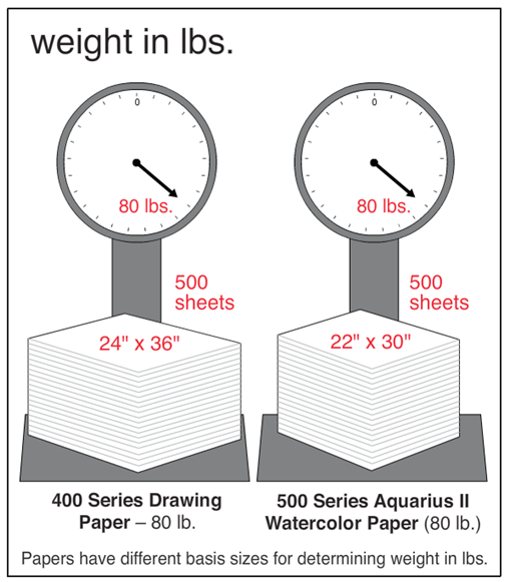
Check that the paper is correctly sized for the medium that you’re working in, and find out if it is sized internally, externally, or internally and externally. Although artists sometimes gesso paper to work in heavier mediums, we generally recommend you use one that is correctly-sized for your project, which means – unlike with canvas and board – you do not need to gesso it if you use the paper, labeled for the medium you choose.
Now let’s dive into the details and look at the types of paper you can use with each medium. This is one of the most vital things to consider. Manufacturers produce paper to work successfully with different mediums to ensure the longevity of your work. Choosing a paper based on their recommendations is definitely a good idea. Below, you will find a list of paper types that Strathmore manufactures, and the mediums they advise you use with them. We’ve included some artists who work with the specific type, or a similar one, who might want to research more.
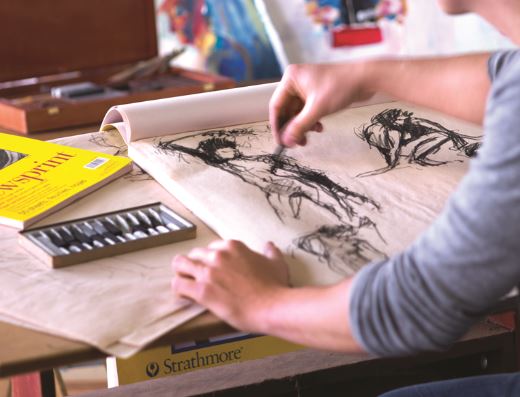
Newsprint
This paper is typically used only as a support for those learning to sketch, or for artists wanting to chart out their ideas. It is not typically acid-free and tends to yellow over time. Mediums that work best on this paper are markers, graphite, charcoal, carbon, drawing chalks, monochrome chalk, and oil pencils. Monochromes are pencils with the sanguine, sepia and white colors, which you see in many of the old masters’ works, like Michelangelo, Leonardo DaVinci, and Pontormo. They of course were using better and heavier paper.
See Strathmore Newsprint Papers
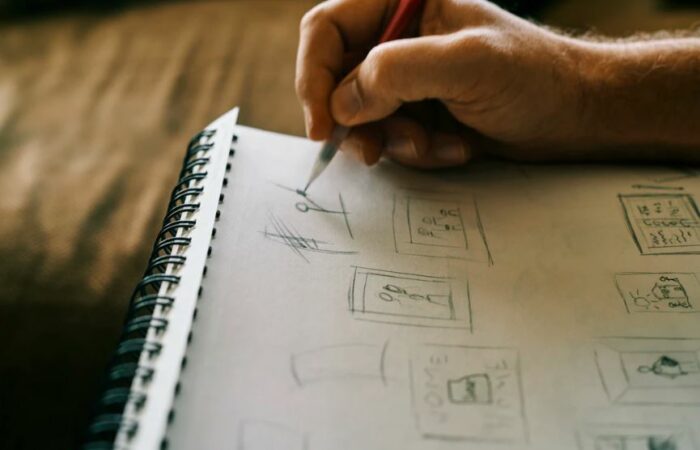
Sketch
Sketching paper is a lighter version of Drawing paper. It is typically used for practising, experimenting with dry media, and quick studies which are finished on heavier, better quality sheets. Many artists use this paper in sketchbooks, collecting references for future compositions. Mediums that work best on it are colored pencils, graphite, charcoal drawing chalks, monochrome chalks, and oil pencils. It is believed that many of Van Gogh’s drawings were made on sketch and drawing paper. He used graphite and light ink with a reed pen.
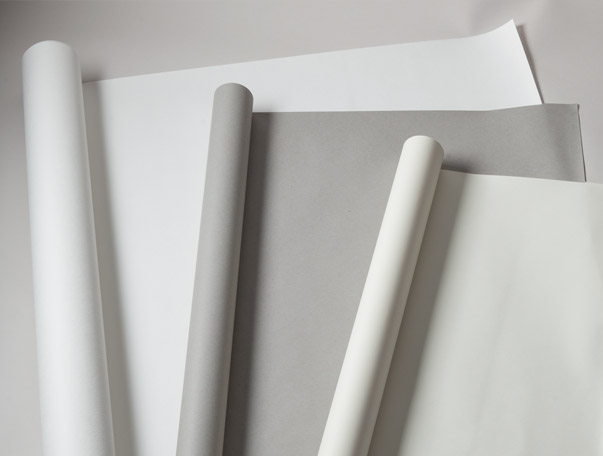
Drawing
Drawing paper is heavier and better quality than sketching paper. It’s commonly used for sketching and finished work. The ideal mediums to use with drawing paper are graphite, charcoal, dry monochromes, soft pastel, oil pastel, markers and pen and ink. Rembrandt did many drawings with pen and brown ink, which are incredible to study.
See Strathmore Drawing Paper Rolls and Journal
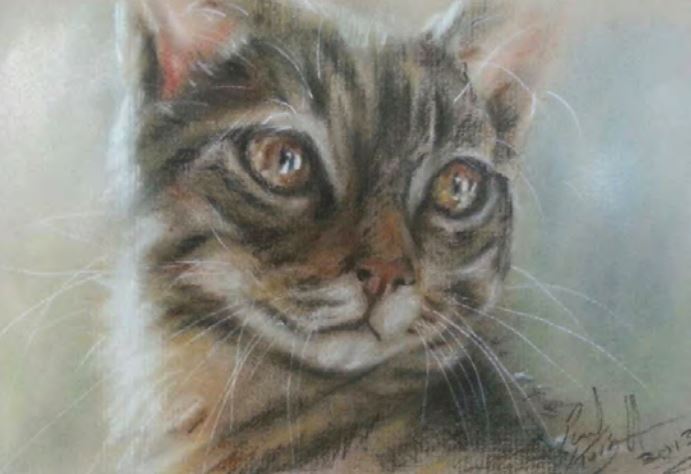
Charcoal
Strathmore 500 Series Charcoal paper has a history going back over 100 years. It is 100% cotton with a unique laid finish. This allows the artist to gain precise shading control, and works best with charcoal, drawing chalks, monochromes, pastel, and graphite. In the past, some artists even used light washes of ink, watercolor and gouache, though this paper is very light weight and would not accept much liquid. People used to describe similar types of laid paper as ‘woven’. Ingres was well known for his accomplished drawings on woven paper, which reflected the surface texture and grain. You might also want to study Giovanni Paolo Panini (nothing to do with the sandwich), another well known draughtsman. His depictions of Italian Old World architecture are astounding.
See Strathmore Charcoal Papers
Artwork by Paul Knight on Strathmore 500 Series Charcoal Paper
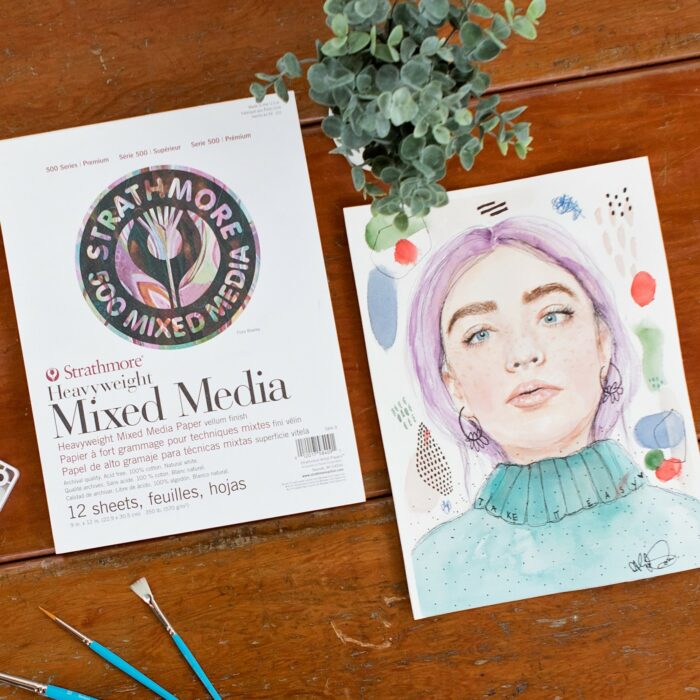
Mixed Media
This paper is a relatively new surface, designed by manufacturers determined to create sheets which can withstand many media techniques commonly used by artists today. It is produced to have qualities like watercolor paper, but with a vellum drawing surface. The ideal mediums are graphite, colored pencil, markers, acrylic, watercolor, gouache, pen & ink, charcoal, drawing chalks, monochromes, pastels, gel pens, fine liners, calligraphy inks … and the list goes on. Many contemporary artists love to use this paper. Check out artist Jordan Rhodes and his unique style using toned mixed media paper with gouache.
See Strathmore Mixed Media Papers
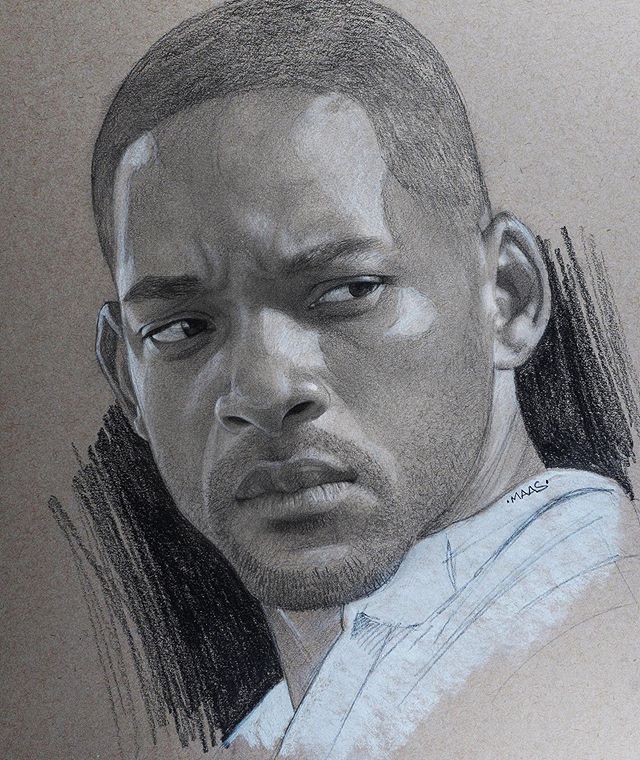
Toned
Strathmore Toned Papers come in 3 midrange shades: tan, gray and blue. Starting your artwork on midrange colored paper allows for unique sketching & drawing possibilities – it provides the middle value that you’d otherwise need to render. A wider range of values from light to dark can be used, and the middle tone makes it easier for the artist to deliberately place shadows and highlights. Keeping the value of the paper as one of the values in the drawing not only saves time, but allows you to use graphite or other dark media to push darker values, and white pencils or other light media to add highlights, which can make your sketches and drawings pop. Our Toned Papers are 100% recycled and are made with 30% post-consumer fiber. They also contain kraft and bark fiber inclusions which adds visual interest.
See Strathmore Toned Papers
Artwork by Justin Maas on Strathmore 400 Series Toned Tan Paper
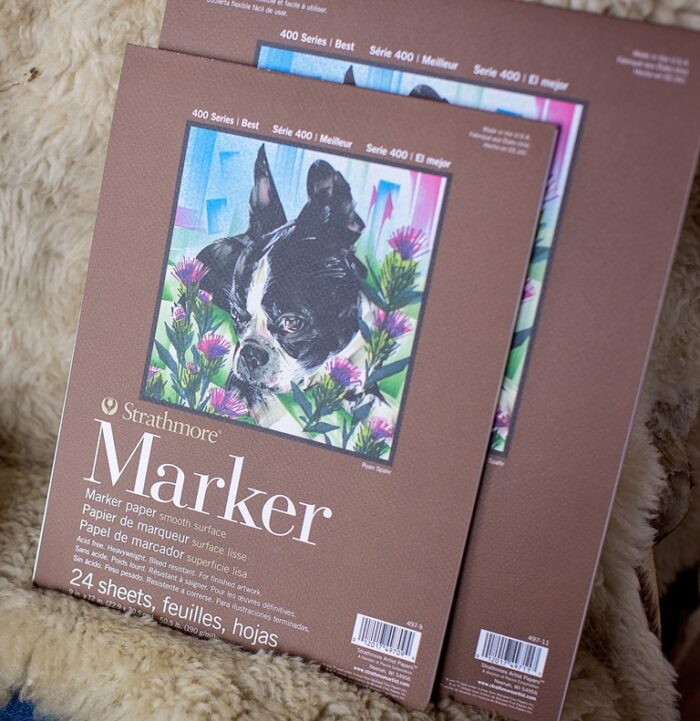
Marker
Strathmore 400 Series Marker Paper has an ultra smooth surface and is heavyweight, perfect for markers. The surface aids in blending and keeps the ink from feathering and bleeding. Though this paper is designed for a specific medium, you can use graphite to lightly sketch out your composition. Some artists also use soft strokes of colored pencils too, but beware, they won’t erase well once you draw over them with a marker! This is a relatively new paper, used by many modern artists. It’s a staple surface in the comic art industry. Check out this article written by the talented Will Terrell who works with markers (amongst many other mediums).
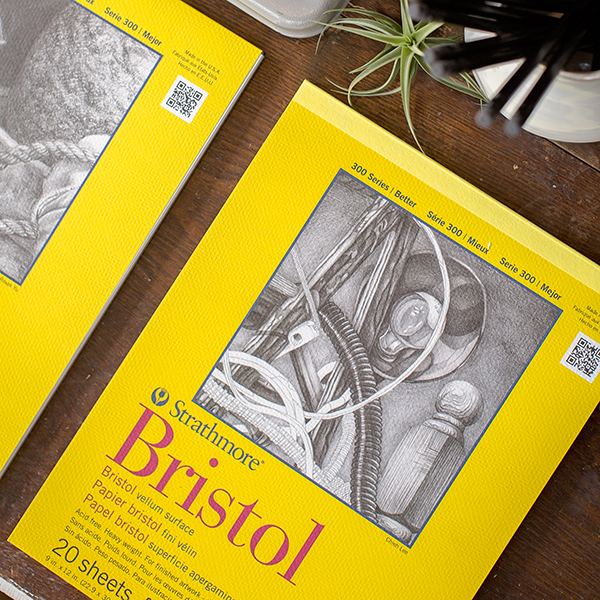
Bristol
This is a very common and versatile paper used in many creative industries and art colleges. Bristol refers to papers in which two or more sheets are pasted together to form 2-ply, 3-ply, etc. sheets. This process achieves stiffness and strength, forming a sheet with two identical and usable felt or top sides. It comes in two types – smooth (plate), and vellum (has some tooth). Smooth Bristol is ideal for pen and ink, airbrush, and detailed work with colored pencil or graphite. The vellum surface is best for graphite, charcoal, airbrush, pastel, crayon, colored pencil, and pen and ink. Check out Jennifer Morrison’s Tulips colored pencil work on Bristol.
See Strathmore Bristol Papers
Artwork by @daphnesgallery on Strathmore 400 Series Bristol Smooth Paper

Layout Bond
This semi-opaque paper is typically used by designers, calligraphers, and many artists in the comic art community. The paper responds well to graphite, colored pencils, chalk, monochrome pencils, and charcoal. It is usually used for finished designer compositions, or rough drawings. Many artists like it as a lightweight drawing paper, and some may use it as a tracing paper.
See Strathmore Layout Bond Paper
Artwork by Alex Marshall on Strathmore 400 Series Layout Bond Paper
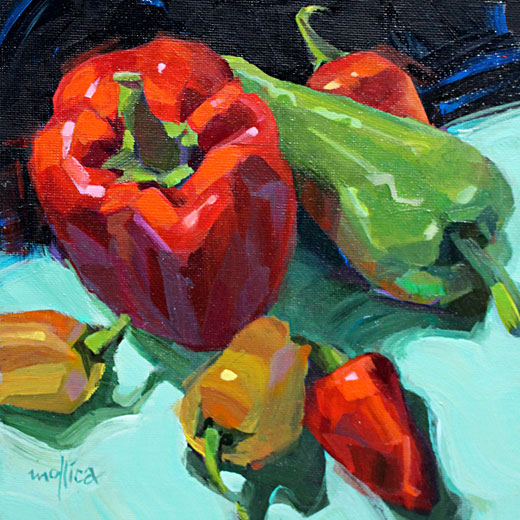
Canvas Paper
This is a canvas textured paper, sized correctly to accept acrylic and oil without gesso. It is a great surface to use while practising painting techniques. Many schools rely on this paper for teaching purposes. The mediums you can use on it are graphite, colored pencil, oils, acrylic, and painting mediums.
See our Canvas Paper
Artwork by Patti Mollica on Strathmore 300 Series Black Canvas Paper

Printmaking
This heavy weight paper is sized correctly to take a tremendous amount of printing inks. It is a very versatile surface which artists use in different printing and drawing techniques like relief, aquatint, lithography, woodblock, intaglio, and fine drawing. You can use oil-based inks, water-based inks, printing mediums, watercolor, gouache, graphite, drawing chalks, monochromes, and acrylic on it. Albert Durer was a wonderful printmaker in the 16th century. Google some of his woodblock and engraving pieces if you want to see a great master of the medium.
See Strathmore Printmaking Papers
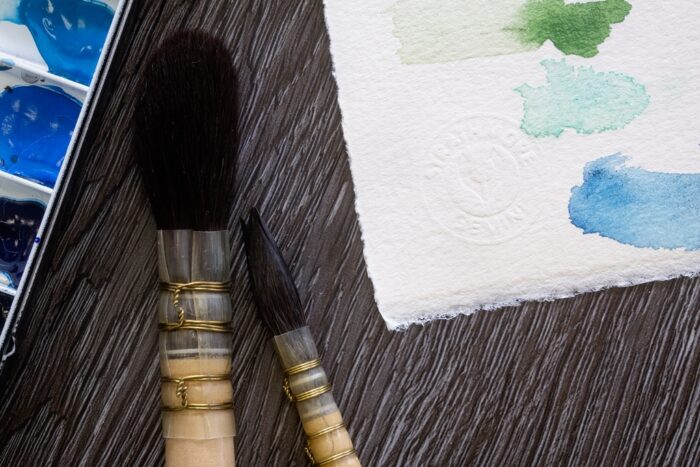
Watercolour
This is one of the largest categories of paper, containing many different surface textures and weights. Typically, watercolor paper can be found in 90 lb, 140 lb, and 300 lb, with the higher number being stiffer. It is best to stretch the 90 lb and 140 lb papers to another surface to keep it from buckling while painting, however, the 300 lb paper does not need stretching. Click here to see our article on stretching watercolor paper. It also comes in 3 surface textures – Hot Press, Cold Press, and Rough. Hot Press paper is very smooth, Cold Press has some pebbling/surface texture, and Rough has a really pronounced pebbling/surface texture. Mediums recommended are graphite, watercolor, gouache, watercolor pencils, colored pencils, liquid acrylics, drawing chalks, and monochromes. John Singer Sargent was a very well known artist who painted watercolor on watercolor paper.
See Strathmore Watercolor Papers
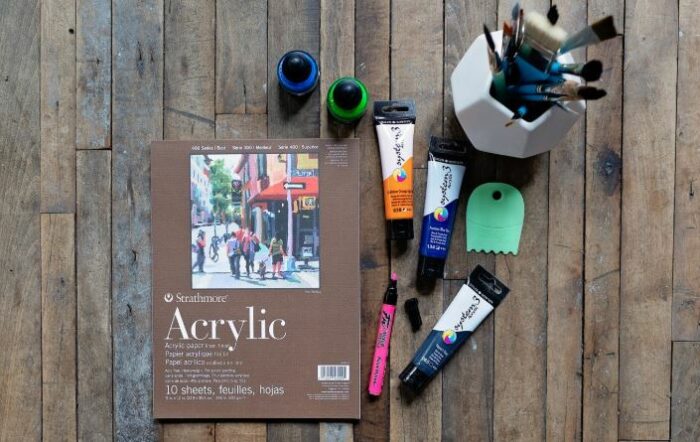
Acrylic Paper
This is a heavyweight fine linen textured paper that is sized correctly to accept acrylic. Mediums that can be used with this paper are graphite, acrylic and acrylic mediums.
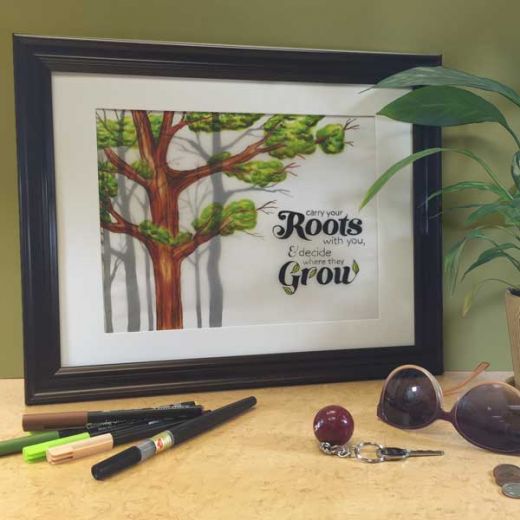
Vellum
Vellum paper is a translucent surface with many different uses for fine art and craft projects. It can be used to protect artwork, used with cards and letters to add decorative elements, and used as a tracing paper. It accepts pastels, chalk, colored pencils, graphite, and markers. Vellum has an interesting history: in the past it was manufactured using calf skin. Of course, it’s not made that way anymore! This was the paper used in The Book of Kells, and Degas was known to draw some of his pastel works on Vellum.
See Strathmore Vellum Paper
Artwork by Jane Oliver on Strathmore Natural Translucent Vellum
So, there you have it in a nutshell: a rundown of many of the papers Strathmore currently manufactures with some suggested mediums to use with each type. Hopefully you’ve found all this information useful and have picked up some inspiring tips and facts. If you have any questions, pop down to your nearest shop – many of our employees are artists themselves and would be happy to tell you more.
Now let’s get creating! Have fun!
Thank you to our friends at Strathmore for this article.

